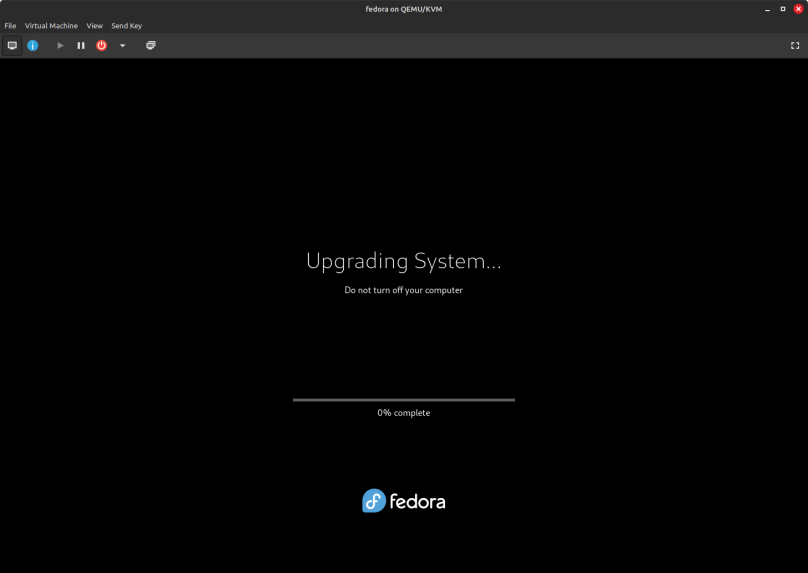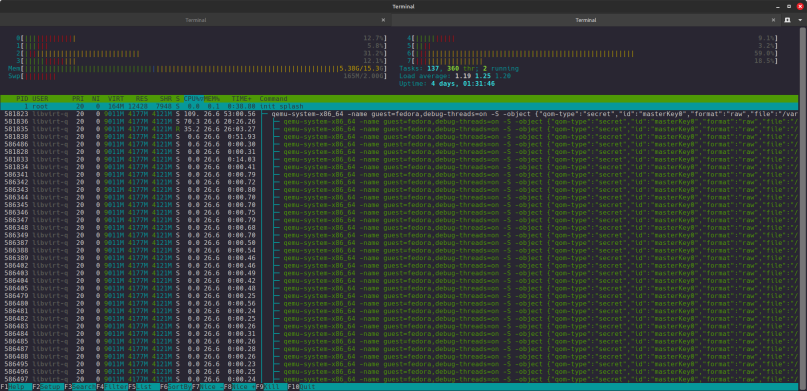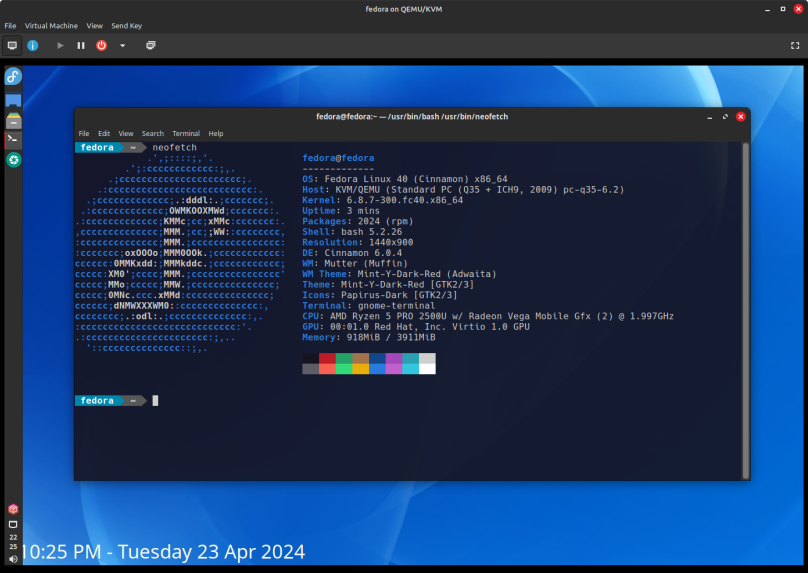Fedora Linux 40 was released yesterday, 23 April 2024. Rather than download a full ISO file and create a virtual machine from that, I took my existing Fedora 39 virtual machine (running with Virtual Machine Manager 4 and qemu 6.2 and hosted on Linux Mint) and updated it with the Fedora tools. Here’s how that went.
There is a well documented process to upgrade an older version of Fedora to a new release, which you can follow here: https://docs.fedoraproject.org/en-US/quick-docs/upgrading-fedora-offline/
Once done with that, you’ll perform a sudo dnf system-upgrade reboot, which is when all the heavy upgrade work really begins. Note from the screen capture there are 2,000 packages to deal with.

Once you kick off the system upgrade, you’re presented with this;

And while that’s happening inside the VM, the host system is getting pretty hammered;

I have no idea how long the upgrade took, but it was well over an hour. While waiting for it to finish I did housework in preparation for going to bed.

When I came back to check the VM, I noticed the wallpaper was changed yet again. Really, why can’t an upgrade keep the older release’s wallpaper? It sounds like a trivial complaint, but it’s not. As neofetch shows, the VM is now officially running Fedora 40.
One big immediate observation is that Fedora 40 is rather sluggish, especially when you move a window around. It’s stutters and there’s a lot of screen tearing. I strongly suspect that the reason is that the now-very-old version of QEMU/KVM isn’t optimized for the kernel running in Fedora 40. The current version of QEMU is 6.2, but general release is version 8, and the QEMU developers just announced the release of version 9. This is why I don’t like running on distributions with very long support timelines. Sounds great for certain types of work, but as a home developer, I don’t need that. I’m going to have to find a repo that will allow me to install directly onto my system, as there is no flatpack version of QEMU.

You must be logged in to post a comment.